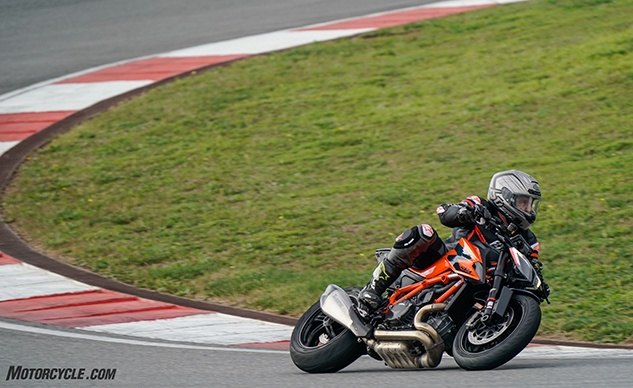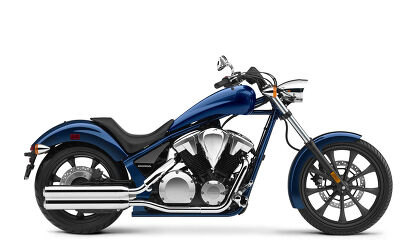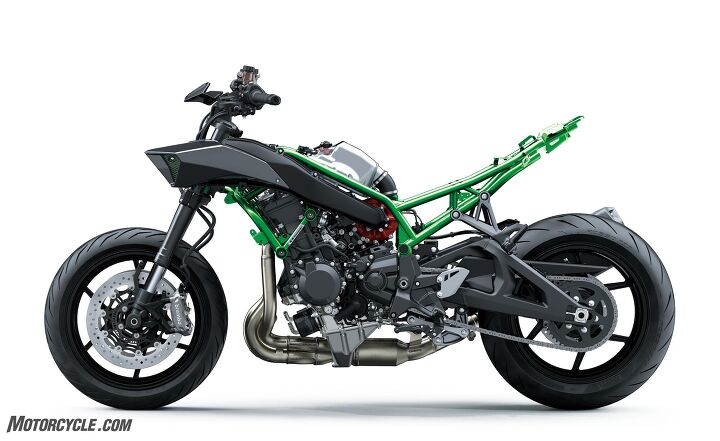What The Heck Is Rake and Trail?

Your motorcycle handles the way it does because of it
Read enough motorcycle reviews and you’ll inevitably hear people like the MO staff talk about two things: Rake and Trail. It’s mentioned so much because rake and trail have a major role to play in the way your motorcycle handles, and the people who design these motorcycles are well aware of this when going from CAD drawing to real-life machine.
So, let’s take a closer look at what rake and trail is and why it’s important. While some of you may already understand rake and trail, newer riders may not. And besides, what harm is there in a refresher course, anyway? We’ll start with the basics of rake and trail, then go a little deeper into each topic later.
What is Rake?
The definition of rake (also known as caster angle) is the angle of the steering axis in relation to the vertical axis. In other words, rake is a measurement – in degrees – from the headstock of your motorcycle to a vertical line drawn through the front axle of your motorcycle. If you want your motorcycle to steer quickly and with little effort, like a sportbike or a dirtbike, you go for a smaller number (to a point). Sportbikes generally have rake numbers in the low- to mid-20s. Buells were notorious for having some extreme rake angles bordering close to the teens. The tradeoff with a small rake number is stability, but we’ll get to that in a minute.
As you’ve likely seen on those wild biker build-off shows, some cruisers can have huge rake angles that are downright ridiculous. Not only does it look silly, it can take a lot of effort to steer. The tradeoff, of course, is a stable motorcycle once you do get it leaned over. Other forms of motorcycles, like Adventure bikes, scramblers, sport-tourers, etc. find a sweet spot in the middle to achieve their desired goals.
What is Trail?
Take a line and draw it through the steering axis until it meets the ground. Now, draw another line perpendicular to the ground down through the front axle (or, more specifically, the front contact patch, as they’re not always the same point). The distance between where the line from the steering axis meets the ground and the line from the front contact patch is trail, measured in both inches and millimeters.
Trail is what makes the front tire want to self-center and is usually what we’re referring to whenever we say a bike feels stable. More trail equals better stability, less trail gets you a more nervous motorcycle. Hopefully by now you can see how rake and trail are interconnected, as rake automatically has an effect on trail – less rake means less trail, and vice versa.
Rake is Dynamic
Adding a bit of complication to this is the fact rake angles are not static; when a fork is compressed under braking, this is effectively changing the rake angle of the front end, making it steeper. Conversely, as the motorcycle is accelerating the fork is extending, increasing the rake angle slightly.
This can be a lot to process, but the important thing to remember is that we can take advantage of this dynamic rake to make the bike handle a certain way. The most extreme example of this is in racing. Hard braking will nearly collapse the front end, temporarily creating a very shallow rake angle, making the bike steer quicker. Trail braking into a corner helps keep the fork compressed (and control the rate at which it rebounds) to maintain your intended arc.
Conversely, you might have experienced trouble finishing a corner, experiencing a feeling as if the bike wanted to run wide. At the end of a corner, naturally the instinct is to accelerate. But if we accelerate too early, the fork extends as we’re already running wide, making it harder to turn. That explains one of the reasons why we have to let off the throttle to help place the motorcycle in the intended direction.
Offset
Offset is a look at two axes: the axis of the steering head and the axis of the fork tubes. Most of the time the two are parallel to each other. However, this isn’t always the case. Some motorcycles have concentric inserts to place inside the head stock to change the offset between the steering axis and fork tubes, thereby changing trail without changing rake. Some aftermarket companies also produce triple clamps that effectively achieve the same result. For ultimate tunability, concentric inserts and different triple clamps can be used together to dramatically alter a motorcycle’s handling.
Other Adjustments
Now that we’ve established quicker steering is achieved through steeper rake and/or shorter trail, and better stability is the result of more relaxed rake angles and/or longer trail numbers (and we have not even begun to discuss how wheelbase affects a motorcycle’s handling), what can you do to your motorcycle to change these numbers?
Alternatively, some higher-end motorcycles have shocks or linkages that allow for rear ride height adjustment. Raising or lowering the rear has a similar effect to raising or lowering the front, and again, there is a finite and limited amount you can raise or lower the rear, too – if you can at all.
Pandora’s Box
Like mentioned at the start of this piece, rake and trail are important aspects in determining how a motorcycle handles, but there are many more variables to take into consideration that go beyond the scope of this article. There are many great books on the topic of motorcycle steering geometry if you’re interested. For now, this should give you a base understanding to hopefully help you understand why your motorcycle handles the way it does.

Troy's been riding motorcycles and writing about them since 2006, getting his start at Rider Magazine. From there, he moved to Sport Rider Magazine before finally landing at Motorcycle.com in 2011. A lifelong gearhead who didn't fully immerse himself in motorcycles until his teenage years, Troy's interests have always been in technology, performance, and going fast. Naturally, racing was the perfect avenue to combine all three. Troy has been racing nearly as long as he's been riding and has competed at the AMA national level. He's also won multiple club races throughout the country, culminating in a Utah Sport Bike Association championship in 2011. He has been invited as a guest instructor for the Yamaha Champions Riding School, and when he's not out riding, he's either wrenching on bikes or watching MotoGP.
More by Troy Siahaan












































Comments
Join the conversation
Thanks, Trizzle. I'm curious about the concentric inserts that change the fork offset. Got any pics?